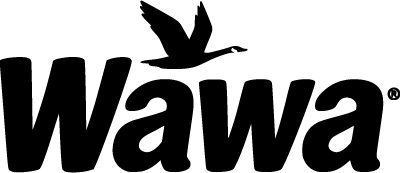
3 Data-Driven Approaches to Grow Your Restaurant
This article is written by Leverage Lab CEO AnnMarie Wills and originally appeared on QSR Magazine.
From your loyalty program to scrolls on your website menu, that digital footprint can be stretched to grow your business. Data lives everywhere and what’s even better is that you have the power to leverage that first-party data to its truest potential. Restaurant brands and franchise owners could reap a range of benefits including a significant boost in revenue, return on ad spend, and increase in order size. The following are three tips to optimize your data and start growing your bottom line.
Make sense of all that data. Whether you’re posting a daily special on Instagram or updating a deal on the app, that first-party data is invaluable, but it can also be overwhelming. Bring all of your data into a Customer Data Platform (CDP) or data warehouse to build a singular view of your customers. And then take it a step further by asking, “what do I want that data to do?” That will inform your goals and help you develop strategies to personalize the customer journey.
We work with a large quick-service restaurant chain, currently building a first-party data infrastructure to personalize customer experiences. Their typical advertising approach would be to lean into existing advertising channels or what we call “walled gardens” (e.g., Google and Facebook). In the walled gardens, they would choose audiences based on what Facebook and Google know rather than using their data which tends to be richer and more relevant. We created a head-to-head test using two audiences. The first audience was based on the built-in walled gardens and the other was a lookalike audience that was made up of actual customers pulled from first-party data. The offer was simple: buy one, get one free beverage. The net result was 2x more redemptions from the lookalike audience.
Show your customers how much you know them. More than 70 percent of consumers expect personalization to be standard, according to studies by McKinsey. Other studies have found it to be as high as 80 percent. We believe the best way to use data is to map the customer journey—awareness, consideration, intention, conversion, and loyalty—then, build a framework and communication plan to personalize messages at every stage. This is being “customer-obsessed” in the truest sense, by fortifying that relationship using real-time data to earn customer trust.
We’ve seen that if brands make a little extra effort to personalize a customer visit based on data and behavior, it translates into better customer outcomes. That brand can then offer a broader diversity of products and services, more frequently, and over a longer period of time. If you have a customer who consistently buys a breakfast sandwich, rather than recommending a muffin, you’d want to push a hot specialty coffee. Every customer receives a different touchpoint.
Re-think your product recommendation tool. Most recommendation or personalization tools don’t go far enough to grow your business, nor do they take advantage of what your customer will likely buy during the golden moment point-of-sale. Some tools are static, based on top sellers or what’s trending now, and might not pertain to your customer at that exact moment.
With a more robust recommendation engine, you can factor out anomalies and one-time events like when you’re buying lunch for the entire baseball team. There are opportunities to go even deeper with contextual recommendations based on the weather at a customer’s precise location, geographic specials and menus, time of day, and inventory availability. At 4 p.m., you can push out notifications for a dinner meal special so that customers can place an order and schedule curbside pick-up because it will start raining in half an hour.
Simply put, quick-service brands have the power to connect first-party, real-time data to every customer visit in a much more personal manner. When used effectively, we’ve seen some amazing results such as a 150 percent increase in return on ad spend, 4x growth in transactions, and triple the growth in customer loyalty. Take a look at the data you’re collecting and consider a change if you’re leaving money on the table.
The Complete Solution for Publishers & Brands
At Leverage Lab, we believe the key to unlocking true value from data isn’t just better tools - it’s the right combination of data expertise, technology knowhow, and strategic execution. That’s why we don’t just offer software - we deliver a full-spectrum approach that ensures your data isn’t just collected, but truly activated to drive growth, engagement, and revenue.













.png)



